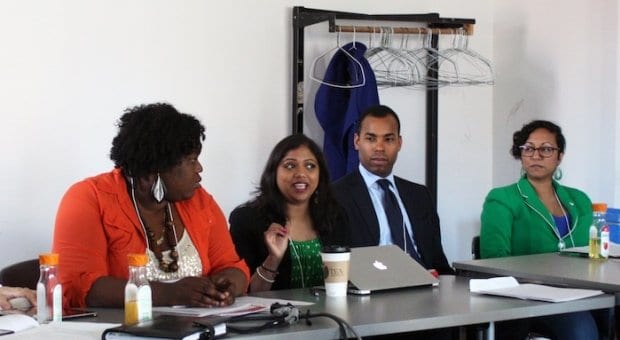The funding tap for LGBT causes has run dry since gay Canadians won the right to get married, according to the director of one of the country’s largest LGBT advocacy organizations.
In the opening panel at the fourth annual LGBT Philanthropy Conference in Toronto, on April 24, Egale Canada executive director Helen Kennedy offered a frank assessment of the challenges her organization faces in the fundraising arena, particularly since marriage equality was achieved.
“After marriage there was this sense that we have everything,” Kennedy said, condemning the ensuing complacency.
The two-day conference included panel discussions that asked how the community can channel money from the donors and funding bodies that support LGBT causes to those who need it.
Kennedy said Egale has found it especially difficult to galvanize donors around trans issues. It is currently working to build support for Bill C-279, which would include protection based on gender identity in Canada’s Human Rights Act. There are no protections for trans people in the Criminal Code or the Human Rights Act, and yet trans people remain among the most vulnerable.
“But when we mention that and pitch it to get the resources that we need in order to mount the kind of advocacy that we did for marriage, it’s night and day,” Kennedy said.
As a result, Egale has turned to allied funders outside the community for support on these issues and has focused much of its effort on education and promoting LGBT acceptance among youth, which Kennedy argues is the key to overall societal change.
In the trans philanthropy panel, participants pointed to Community One Foundation as an important source of GTA funding for trans causes. Finding transgender sponsorship opportunities is also a priority for TD Bank Financial Group, according to Andre Lucas, who manages its diversity community-giving portfolio.
South of the border, the broad trends in LGBT philanthropy are encouraging.
“In 1973, there was $16,000 of LGBT funding in the United States, and now it’s about $125 million in 2012,” reported Kristina Wertz, of Funders for LGBTQ Issues, explaining that the vast majority of this money comes from private foundations — started primarily by wealthy gay men — with a smaller proportion coming from community-based foundations.
Speakers on the diversity panel described the catch-22 situations smaller organizations can find themselves in: lacking funds, in part, because they don’t have the resources to establish effective development programs.
“As an organization, we make maybe $20,000 a year in fundraising, maximum, and we have a choice: we maybe commit those $20,000 to a fundraising program or we commit our $20,000 to the needs of our clients who walk in the door every day and need maybe $100 for a winter jacket,” said Shannon Ryan, of BlackCAP.
Engaging donors can be especially tricky for organizations with intersectional mandates, as members of their broader communities will often ally with one identity but not the other.
“Making the case for giving for our organization is extremely challenging,” said Vijaya Chikermane, executive director of the Alliance for South Asian AIDS Prevention, explaining that its prospective donors are split between those committed to HIV causes and those aligned to the South Asian community.
As a result of these issues, smaller intersectional organizations tend to rely on government grants and corporate giving as their primary source of funding, rather than donor philanthropy.
In another panel, an audience member proposed crowdfunding as an alternative to traditional fundraising for smaller organizations, though discussion of crowdfunding was notably absent from the overall conference program.
Offering the corporate perspective, Scott Mullin, vice-president of community relations at TD Bank Financial Group, said that the line between donations and sponsorships has blurred. “The days of absolutely pure donations for completely altruistic reasons have probably faded considerably,” Mullin said. At TD, for example, one of the initial motivators for investing in LGBT causes was to signal to employees that the bank was an LGBT-friendly company, Mullin explained.
At the same time, Kyle Winters, of the Heart and Stroke Foundation, urged the audience not to sell out, but rather to find points of common ground with corporate sponsors and focus on those areas.
“If you have a line in the sand, don’t cross that line,” Winters said.
Of course, everyone’s line will be different.
The Association of Fundraising Professionals and the LGBT Giving Network hosted the conference, with funding from the Ontario Ministry of Citizenship and Immigration and sponsorship from TD.

 Why you can trust Xtra
Why you can trust Xtra


